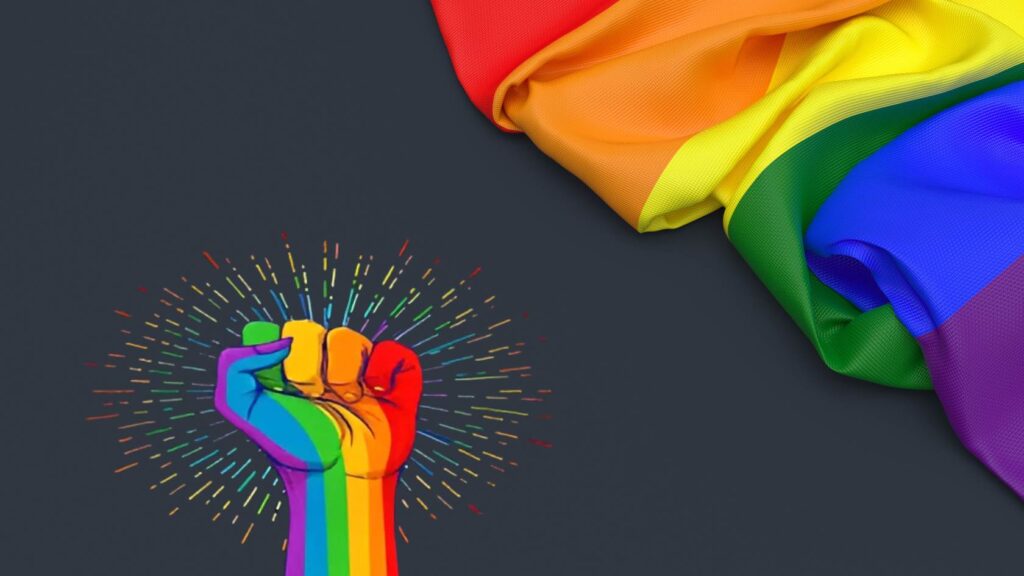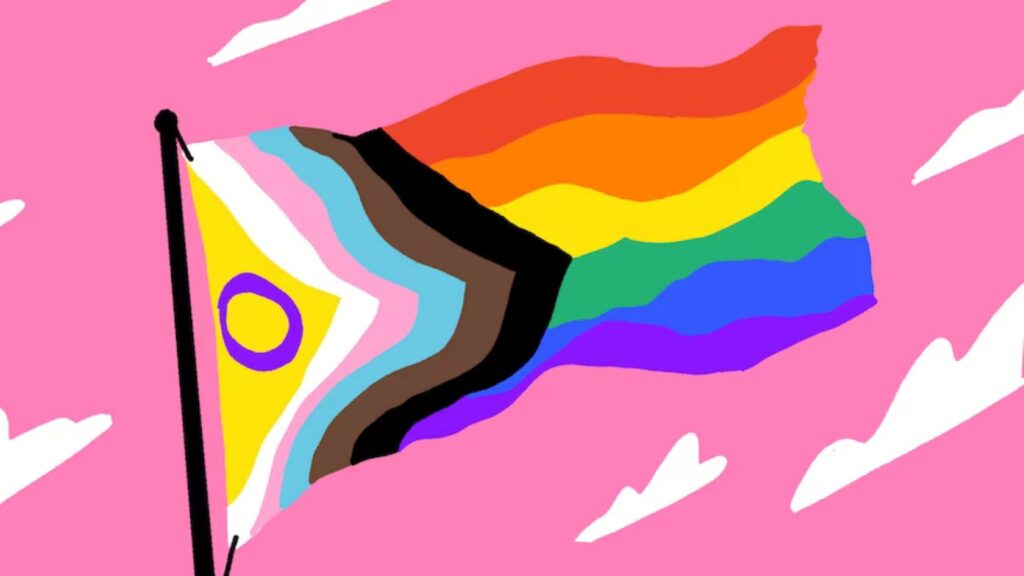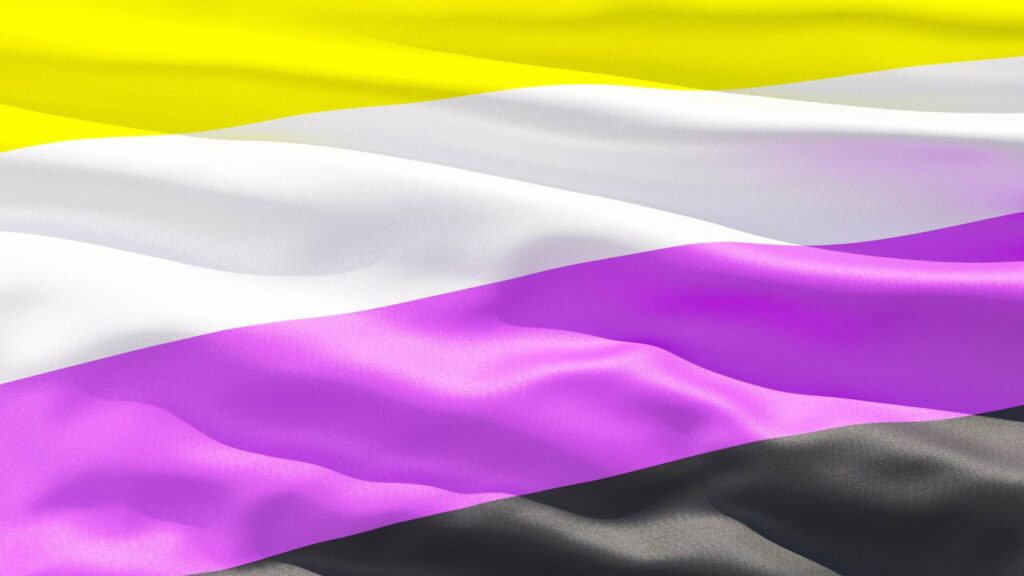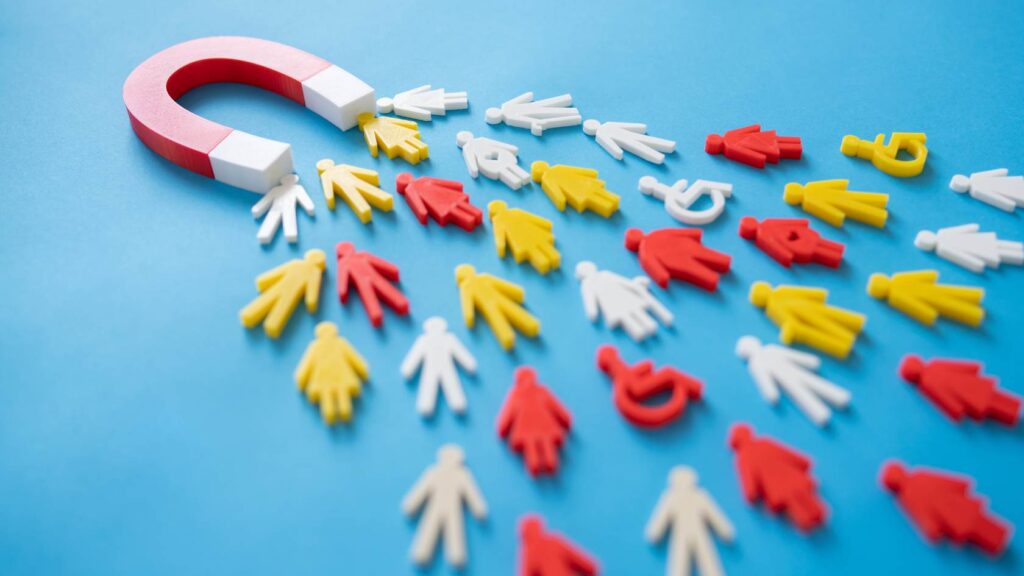Gender questions are something very real, we hope to contribute to the awareness and guide you somehow through this subject. LGBTQ+ represents a diverse group of people with varying sexual orientations, gender identities, and expressions. LGBTQ+ stands for Lesbian, Gay, Bisexual, Transgender, Queer (or Questioning), with the plus (+) symbolizing the many additional identities that fall outside these core terms. From pansexual to non-binary, and from asexual to gender-fluid, each label within the community reflects a unique way in which individuals experience their sexuality and gender.
Historically, the term ‘gay community’ was commonly used before the introduction of more inclusive acronyms like LGBTQIA+. This evolution in terminology highlights the importance of language evolving to represent a broader range of identities within the community.
In an increasingly inclusive and equality-driven world, understanding these identities is more important than ever. Terms like gender diversity, sexual orientation, and non-binary gender identities are being discussed more frequently in the media and daily conversations. However, there’s often still confusion about what these terms mean and how they are lived by people within this community.
It is important to understand that a person’s sexual orientation is distinct from their gender identity, and both aspects contribute to the complexity of identities within the LGBTQ+ community.
This article provides a comprehensive guide to the different identities within the LGBTQ+ spectrum. We’ll explain what each label means, how these terms have evolved, and why they are important in the broader conversation about inclusivity and sexual diversity. Whether you’re seeking a better understanding of LGBTQ+ terminology for personal reasons or to deepen your knowledge of gender and sexuality, this guide will give you a clear overview of the many facets of the community.
With growing interest in topics such as sexual diversity, gender identity, and LGBTQ+ rights, it is crucial to build a foundation of understanding and knowledge. Search queries like “what does LGBTQ+ mean?”, “difference between pansexual and bisexual”, and “what is non-binary?” are becoming increasingly popular on platforms like Google, showing a rising demand for clear and accurate information on these subjects. In this guide, we’ll explore the various sexual and gender identities within the LGBTQ+ community, providing clear explanations to clarify any misconceptions.
There’s much more than one gender, or just male or female bodies.

Understanding the Spectrum of Gender and Sexual Identities
Gender identity is a deeply-held sense of being male, female, or something else, and it may not necessarily align with the sex assigned at birth. For example, a transgender person may identify as a gender different from the one they were assigned at birth.
It is important to note that a sexual orientation is distinct from their gender identity. While gender identity refers to one’s internal understanding of their gender, a person’s sexual orientation pertains to whom they are attracted to, which can be independent of their gender identity. This distinction underscores the diversity of identities within the community.
Understanding these concepts is crucial for fostering an inclusive environment.
1. What is Gender Identity?
Gender identity refers to a person’s deeply felt internal and individual sense of their own gender, which may be male, female, a blend of both, or neither. It is a deeply personal and intrinsic part of who someone is, encompassing their self-perception, gender expression, and how they experience their gender on a day-to-day basis. Unlike the sex assigned at birth, which is based on physical characteristics, gender identity is about how individuals see themselves and wish to be recognized by others.
Understanding gender identity is crucial because it influences how people navigate their lives, interact with others, and perceive themselves. Gender identities can be diverse and fluid, evolving over time as individuals grow and explore their sense of self. Respecting and acknowledging each person’s gender identity is fundamental to fostering an inclusive and supportive environment for everyone.

Explore the concept of gender identity and its significance in understanding oneself.
Types of Gender Identities
Gender identities are complex and diverse, extending far beyond the traditional binary framework of male and female. Understanding these identities is crucial for promoting inclusivity and respect for all individuals, regardless of their gender identity.
Delve into the various gender identities that exist beyond the binary framework.
Gender identity is a deeply personal and intrinsic part of who someone is, encompassing their self-perception, gender expression, and how they experience their gender on a day-to-day basis. While many people identify as male or female, there are numerous other gender identities that exist outside this binary framework.
Non-Binary: Non-binary individuals do not exclusively identify as male or female. Instead, they may feel a combination of genders, no gender at all, or fluctuate between genders. Non-binary is often used as an umbrella term that includes other identities like genderqueer, genderfluid, or agender. Many non-binary people prefer gender-neutral pronouns such as “they/them.”
Genderqueer: Genderqueer is a term used by individuals who reject traditional gender distinctions and identify as neither exclusively male nor female. They may see themselves as both, neither, or somewhere in between.
Genderfluid: Genderfluid people experience shifts in their gender identity over time. They may feel more masculine, feminine, or non-binary at different times, and this fluidity is an integral part of their experience. Genderfluidity acknowledges that gender is not fixed but can change based on an individual’s feelings, context, or experiences.
Agender: Agender individuals do not identify with any gender. They may feel a lack of gender or see themselves as having a neutral gender identity. Agender people often prefer gender-neutral pronouns and may choose to express their gender in ways that do not conform to traditional gender norms.
Bigender: Bigender individuals identify with two distinct genders, either simultaneously or switching between them. These genders can be male and female, or they can include non-binary identities.
Two-Spirit: Two-Spirit is a term used by some Indigenous cultures in North America to describe a person who embodies both masculine and feminine qualities. It is a culturally specific identity that encompasses a range of gender expressions and roles within Indigenous communities.
Understanding and respecting these diverse gender identities is essential for fostering an inclusive and supportive environment for everyone. Recognizing that gender is a spectrum and not limited to a binary framework allows for a more nuanced and empathetic approach to gender diversity.
1. Lesbian (L)
A lesbian is a woman who is romantically and/or sexually attracted to other women. This term specifically refers to female-female relationships, and it’s one of the most recognized identities in the LGBTQ+ acronym. For many women, being a lesbian is not just about attraction, but also about creating a strong emotional connection with other women.
2. Gay (G)
The term gay usually refers to men who are romantically and/or sexually attracted to other men. However, it can also be used as an umbrella term to describe same-sex attraction, including women who are attracted to women. Historically, “gay” has been used to describe homosexual relationships, and it remains one of the most common terms associated with the LGBTQ+ community.
3. Bisexual (B)
A bisexual person is someone who is attracted to more than one gender. This could mean attraction to both men and women, or to people of various gender identities. Bisexuality challenges the idea that sexual orientation must fit into rigid categories, instead embracing fluidity and diversity in attraction.
4. Transgender (T)
Transgender is an umbrella term for individuals whose gender identity does not align with the sex they were assigned at birth. For example, a transgender woman is someone who was assigned male at birth but identifies and lives as a woman. Transgender individuals may or may not choose to undergo medical procedures, such as hormone therapy or surgery, as part of their transition. It is important to respect the gender identity of transgender people by using their correct pronouns and names.
5. Queer (Q)
Queer is a flexible, inclusive term that encompasses a wide range of sexual orientations and gender identities. It is often used by individuals who feel that traditional labels like “gay” or “bisexual” don’t fully capture their experience of gender or sexuality. Once used as a derogatory term, “queer” has been reclaimed by the LGBTQ+ community to represent empowerment and self-acceptance.
In the late 80s, the term ‘queer’ was historically reclaimed by the queer community as a way to resist norms and address issues like racism and ableism within the broader LGBT community.
6. Intersex (I)
Though not always included in the LGBTQ+ acronym, intersex refers to individuals who are born with physical sex characteristics (such as chromosomes, hormones, or genitalia) that do not fit typical definitions of male or female. Intersex is a biological variation, not a gender identity, and people who are intersex may identify as male, female, or non-binary.
7. Asexual (A)
An asexual person experiences little to no sexual attraction to others. Asexuality exists on a spectrum, where some individuals do not experience sexual attraction at all, while others, such as those who identify as greysexual, may experience it infrequently or under specific circumstances. Many asexual individuals may still experience romantic attraction or have relationships. It’s important to note that asexuality is a valid sexual orientation, and not synonymous with celibacy or a lack of interest in emotional intimacy.

Non-Binary Gender Identity
Non-binary individuals do not exclusively identify as male or female. Instead, they may feel a combination of genders, no gender at all, or fluctuate between genders. Non-binary is often used as an umbrella term that includes other identities like genderqueer, genderfluid, or agender. Many non-binary people prefer gender-neutral pronouns such as “they/them.”
9. Pansexual
A pansexual person is attracted to others regardless of their gender. Pansexuality is different from bisexuality because it does not focus on attraction to two or more specific genders; instead, pansexual individuals may be attracted to people of all genders, including those outside the male/female binary. Pansexuality highlights the belief that gender is not a limiting factor in who someone is romantically or sexually attracted to.
Pansexuality includes both sexual and romantic attraction to people of all genders.
10. Genderfluid
Genderfluid people experience shifts in their gender identity over time. They may feel more masculine, feminine, or non-binary at different times, and this fluidity is an integral part of their experience. Genderfluidity acknowledges that gender is not fixed but can change based on an individual’s feelings, context, or experiences.
Demisexual: Sexual and Romantic Attraction
A demisexual person experiences sexual attraction only after forming a strong emotional bond with someone. Demisexuality challenges the idea that sexual attraction is immediate or based on physical appearance. For demisexual individuals, emotional intimacy is essential for sexual desire to develop.

Understanding Sexual Orientation and Attraction
13. What is Sexual Orientation?
Sexual orientation is a core aspect of human identity that describes a person’s enduring pattern of emotional, romantic, and sexual attraction to others. This can include attraction to people of the same gender, different genders, or more than one gender. Sexual orientation is shaped by a complex interplay of biological, psychological, and social factors, making it a unique and personal experience for each individual.
It is important to distinguish sexual orientation from gender identity, as the two are related but distinct concepts. While gender identity is about who you are, a person’s sexual orientation is about who they are attracted to. Recognizing and respecting each person’s sexual orientation is essential for their overall well-being and mental health, as it is a fundamental part of their identity.
Define sexual orientation and its role in personal identity.
Types of Sexual Orientations
Sexual orientations refer to an individual’s pattern of emotional, romantic, and/or sexual attraction to others. Understanding these orientations is essential for promoting inclusivity and respect for all individuals, regardless of their sexual orientation.
Explore the diverse range of sexual orientations and their unique characteristics.
Sexual orientation is a core aspect of human identity that describes a person’s enduring pattern of emotional, romantic, and sexual attraction to others. This can include attraction to people of the same gender, different genders, or more than one gender. Here are some of the diverse sexual orientations within the LGBTQ+ community:
Heterosexual: Heterosexual individuals are attracted to people of the opposite gender. This is the most common sexual orientation and is often referred to as “straight.”
Homosexual: Homosexual individuals are attracted to people of the same gender. This includes gay men and lesbian women. The term “gay” is often used as an umbrella term for homosexual individuals.
Bisexual: Bisexual individuals are attracted to more than one gender. This could mean attraction to both men and women, or to people of various gender identities. Bisexuality challenges the idea that sexual orientation must fit into rigid categories, instead embracing fluidity and diversity in attraction.
Pansexual: Pansexual individuals are attracted to others regardless of their gender. Pansexuality is different from bisexuality because it does not focus on attraction to two or more specific genders; instead, pansexual individuals may be attracted to people of all genders, including those outside the male/female binary. Pansexuality highlights the belief that gender is not a limiting factor in who someone is romantically or sexually attracted to.
Asexual: Asexual individuals experience little to no sexual attraction to others. Asexuality exists on a spectrum, where some individuals do not experience sexual attraction at all, while others, such as those who identify as greysexual, may experience it infrequently or under specific circumstances. Many asexual individuals may still experience romantic attraction or have relationships. It’s important to note that asexuality is a valid sexual orientation, and not synonymous with celibacy or a lack of interest in emotional intimacy.
Demisexual: Demisexual individuals experience sexual attraction only after forming a strong emotional bond with someone. Demisexuality challenges the idea that sexual attraction is immediate or based on physical appearance. For demisexual individuals, emotional intimacy is essential for sexual desire to develop.
Queer: Queer is a flexible, inclusive term that encompasses a wide range of sexual orientations and gender identities. It is often used by individuals who feel that traditional labels like “gay” or “bisexual” don’t fully capture their experience of gender or sexuality. Once used as a derogatory term, “queer” has been reclaimed by the LGBTQ+ community to represent empowerment and self-acceptance.
Understanding these diverse sexual orientations is crucial for fostering an inclusive and supportive environment for everyone. Recognizing and respecting each person’s sexual orientation is essential for their overall well-being and mental health, as it is a fundamental part of their identity.
14. What is Sexual Attraction?
Sexual attraction is the experience of being drawn to another person in a way that involves feelings of desire, arousal, and intimacy. This attraction can manifest in various forms, including physical attraction, emotional connection, and romantic feelings. It is a natural and normal part of human experience, playing a significant role in shaping an individual’s sexual orientation and identity.
Understanding sexual attraction is important because it helps explain the diverse ways people experience and express their sexuality. Recognizing and respecting each person’s experiences of sexual attraction is crucial for fostering a supportive and inclusive environment, as these experiences are integral to their overall identity and mental health.

Coming Out and Self-Identification
Coming out and self-identification are critical processes for individuals who identify as LGBTQ+. These processes involve acknowledging and expressing one’s gender identity and sexual orientation, which can be a challenging and vulnerable experience.
The Coming Out Process
Coming out involves disclosing one’s gender identity and/or sexual orientation to others, which can be a gradual process that occurs over time. This can include coming out to family members, friends, or colleagues, and can be a liberating experience that allows individuals to live authentically.
Coming out is a deeply personal journey that varies for each individual. For some, it may be a straightforward process, while for others, it can be fraught with fear and uncertainty. The decision to come out is influenced by various factors, including cultural background, family dynamics, and personal circumstances.
Stages of Coming Out:
- Self-Realization: The first stage involves recognizing and accepting one’s own gender identity or sexual orientation. This can be a period of self-reflection and exploration, where individuals come to terms with their true selves.
- Disclosure to Close Ones: The next stage often involves sharing this aspect of one’s identity with close friends or family members. This can be a daunting step, as it requires vulnerability and trust.
- Broader Disclosure: Some individuals may choose to come out to a wider circle, including colleagues, acquaintances, or the public. This stage can vary greatly depending on the individual’s comfort level and the support they receive.
Challenges of Coming Out:
- Fear of Rejection: One of the biggest fears for individuals coming out is the potential for rejection or negative reactions from loved ones.
- Safety Concerns: In some cases, coming out can pose risks to an individual’s safety, particularly in environments that are not accepting of LGBTQ+ identities.
- Emotional Impact: The process of coming out can be emotionally taxing, as it involves navigating complex feelings and potential conflicts.
Support and Acceptance:
- Creating a Supportive Environment: It is crucial for friends, family, and allies to create a supportive and accepting environment for individuals who are coming out. This includes using correct pronouns, offering emotional support, and educating oneself about LGBTQ+ issues.
- Seeking Support Networks: Many individuals find comfort and support in LGBTQ+ communities, support groups, or counseling services. These networks can provide a sense of belonging and understanding.
Coming out is a significant step towards living authentically and embracing one’s true self. It is important to approach this process with empathy, respect, and support, recognizing the courage it takes for individuals to share this aspect of their identity.
By integrating these new sections, the article will provide a more comprehensive and reader-friendly guide to understanding the diverse gender and sexual identities within the LGBTQ+ community, as well as the important processes of coming out and self-identification.
Conclusion Gender identities
The community is incredibly diverse, with countless identities that each carry their own unique meaning and significance. Understanding the various labels and identities within this community is key to fostering inclusivity, respect, and support for everyone, regardless of how they identify. As society becomes more accepting of sexual and gender diversity, it’s essential to stay informed and open-minded about the many ways in which people express who they are. Support from allies, typically straight or cisgender individuals, plays a crucial role in promoting inclusivity and understanding within the LGBT community.
Whether you are part of this community or an ally, knowledge and understanding are the first steps toward creating a more inclusive world where everyone’s identity is celebrated.

